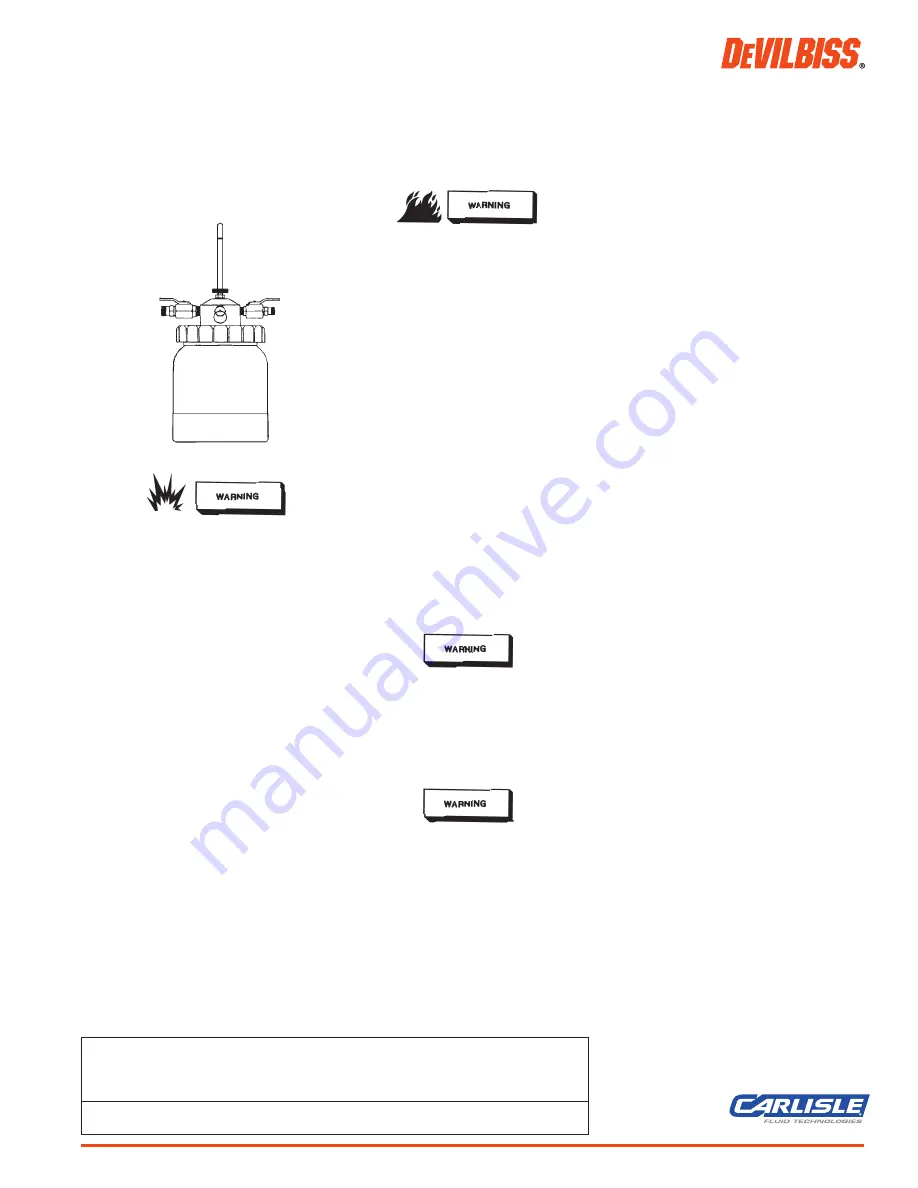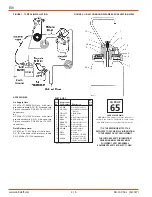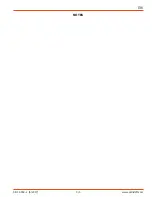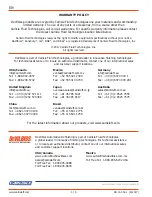
HD-503
HOSE/GUN CLEANER
Important: Before using this equip-
ment, read all safety precautions and
instructions. Keep for future use.
DESCRIPTION
Halogenated Hydrocarbon sol-
vents - for example; 1, 1, 1 - Trichlo-
roethane and Methylene Chloride
- can chemically react with the
aluminum in this hose/gun cleaner
and cause an explosion hazard.
Read the label or data sheet for
the material you intend to spray.
Do not use materials containing
these solvents with the hose/gun
cleaner listed above.
This hose/gun cleaner provides a means
of cleaning the inside of material hose,
fluid passageways of spray guns and
other paint equipment. It is designed
to mix solvents and compressed air to
pressure flush paint lines and passages
quickly and thoroughly, eliminating color
contamination and saving time. This re-
sults in clean and dry paint passageways
using less than 25% of cleaning solvents
required in wet flush systems.
SPECIFICATIONS
Fluid Capacity:
2 quarts
Dry Weight:
5 lbs.
Maximum Working Pressure: 50 PSI
Air Inlet Size Ball Valve:
1/4” NPS(M)
Fluid Outlet Size: Ball Valve 3/8” NPS(M)
WETTED PARTS
Wetted parts are aluminum, nickle plated
brass, PTFE and santoprene gasket.
INSTALLATION
Static electricity is produced
when using this hose/gun cleaner.
Static electricity sparks may be
created during the cleaning opera-
tion. A spark from static electric-
ity may cause fire or explosion.
If the gun or tool attached to the
fluid hose line is not grounded, it
will build a static charge. To pre-
vent sparks from static electricity,
you must ground:
1. The hose/gun cleaner
2. The gun or tool attached to
the fluid hose line from the
equipment cleaner.
3. The waste container.
To ground equipment:
1. Use air hose containing a
static electricity grounding
wire.
2. Attach one end of a ground
wire to each item listed
above.
3. Attach the other end of the
wire to a water pipe, metal
electrical conduit or any
pipe or structural member
known to be grounded.
Overpressurized equipment and
hoses may be damaged or subject
to hazardous bursting. Your hose/
gun cleaner is designed to have
a maximum working pressure
(MWP) of 50 psi. Always use hose
and accessories designed for this
maximum fluid pressure.
Air pressure loads that are higher
than design loads, or changes to
the hose/gun cleaner can cause it
to rupture or explode.
A safety valve protects the cleaner
from overpressurization. During
each use, pull the ring on the safe-
ty valve to make sure it operates
freely and relieves air pressure. If
the valve is stuck, does not oper-
ate freely or does not relieve air
pressure, it must be replaced. Do
not eliminate, make adjustments
or substitutions to this valve.
Changes to the hose/gun cleaner
will weaken it. Never drill into,
weld, or change the hose/gun
cleaner in any way.
The maximum working pressure
of the cleaner is 50 psi.
OPERATION
When spraying is complete, back flush
remaining material in spray gun and hose
as follows:
1. Turn off air to material tank and bleed
air out of the material tank.
2. Loosen clamps on tank lid. Tip lid so
material will run out of fluid tube into
material tank.
3. Loosen air cap on gun several turns
and hold rag over cap. Pull trigger
and force material from gun and
hose back into tank.
To clean hose and gun passages:
1. Fill hose/gun cleaner with suitable
cleaning solvent (see “Warning” in
Column 1 on Halogenated Hydrocar-
bon solvents). Close lid on cleaner.
2. Connect air hose to 1/4” NPS(M) ball
valve on gun/hose cleaner. Close ball
valve. Regulate air pressure (must be
remotely regulated) to a maximum
of 50 psig.
3. Disconnect material hose from
material supply tank and connect to
3/8” NPS(M) ball valve on hose/gun
cleaner.
4. When ready to clean, open both ball
valves on hose/gun cleaner.
5. Turn metering valve on top of hose/
gun cleaner to adjust amount of
solvent - air ratio. Turn counter-
clockwise to increase, clockwise to
decrease. Fully clockwise shuts off
solvent completely. To begin, open
counterclockwise at least 2 turns for
sufficient solvent for cleaning.
6. Trigger gun with solvent going into
spray booth or properly grounded
container. Continue spraying until
solvent is clear with no traces of
paint.
7. Turn metering valve on hose/gun
cleaner fully clockwise shutting off
solvent flow, while allowing air to
continue to flow. Continue until
solvent residue is removed.
8. Turn off air at source. Trigger gun to
remove residual air pressure. Close
both ball valves on hose/gun cleaner.
PREVENTIVE MAINTENANCE
Check lid gasket (7) and needle valve
gasket (2) for signs of wear or damage.
Replace as needed.
SB-14-052-L (6/2017)
1 / 4
www.carlisleft.com
EN
SERVICE MANUAL
IMPORTANT! DO NOT DESTROY
It is the Customer's responsibility to have all operators and service personnel read and understand
this manual. Contact your local DeVilbiss representative for additional copies of this manual.
READ ALL INSTRUCTIONS BEFORE OPERATING THIS DEVILBISS PRODUCT.






















